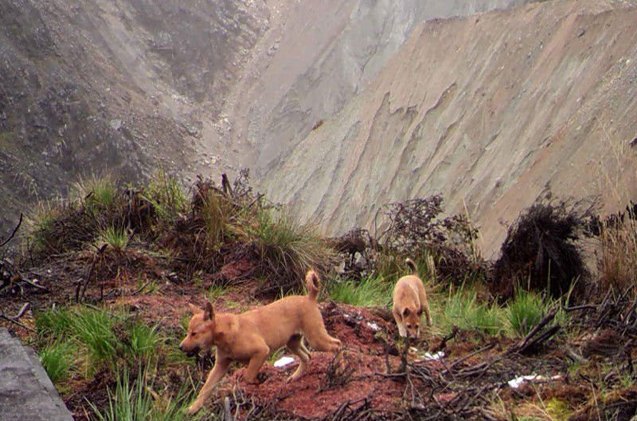Believed Extinct, Wild Dog Breed Rediscovered in New Guinea Highlands

DNA analysis has confirmed that a species previously thought extinct in its native habitat is indeed alive and well–even thriving with males, females, and pups living in isolation and far away from any human contact. This New Guinea Highland Wild Dog group is the first to be seen in over 50 years, and is an incredible testament to their survivability and an opportunity for more research and science, according the the New Guinea Highland Wild Dog Foundation (NGHWDF). The group was behind the discovery in the remote and inhospitable region of New Guinea they were found in.
Related: Is Bulldog Breed Doomed to Extinction?
An expedition in 2016 located and gathered documentation and biological samples of the animals, and have proven some of the once thought lost dogs still remain and thrive in the New Guinea highlands. Up to this point, only two other pictures of the dog have been seen in nearly half a century, taken in 2005 and 2012 respectively. Zoologist James K. McIntyre ran the expedition and joined with researchers from the University of Papua, who were also looking for the ancient dog species.
In September of 2016, a muddy pawprint led them to follow signs that something dog-like was indeed wandering the New Guinea highlands at altitudes of 11,351 to 14,435 feet. The area is full of dense forest, and quite remote–perhaps why the group was able to be so elusive to researchers. The team deployed trail cameras and then watched around the clock, looking for signs. In just two days, they were able to see over 140 images of the Wild Highland Dog on Puncak Jaya–which happens to be the tallest island peak in the world!
Related: Ancient Dogs Provide Clues About North America’s Early Inhabitants
The team also had first-hand observation, documentation, and the DNA analysis and fecal samples confirm they are related to Australian dingoes and New Guinea Singing Dogs. While researchers are unsure as to how the dogs are all related, that they exist and can be further studied will go a long way for establishing that relationship. It was once believed the species arrived with human immigrants over 6,000 years ago, but now new evidence suggests they may have migrated without human accompaniment.
It’s not yet confirmed, but these Wild Dogs may be able to make some of the unique vocal sounds their captive-bred cousins, the New Guinea Singing Dogs, do. There are approximately 300 New Guinea Singing Dogs in zoos, private facilities and homes around the world, and they are known for their high-pitched singing.
Most importantly, researchers are optimistic about their survival chances, as the group they found was full of thriving packs and new pups. They seem to have done well with the stewardship measures local mining companies have been creating, thriving in sanctuaries inadvertently created and enjoyed by these rare beauties. The research is continuing and more information about them is to be expected in the next few months.

More by Lori Ennis

























